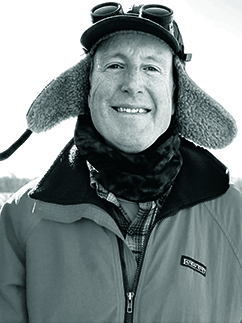Easy to learn art tips to turn the ordinary into the extraordinary
Sketching advice to create eye-catching art from James Gurney and the late Thomas Kinkade.
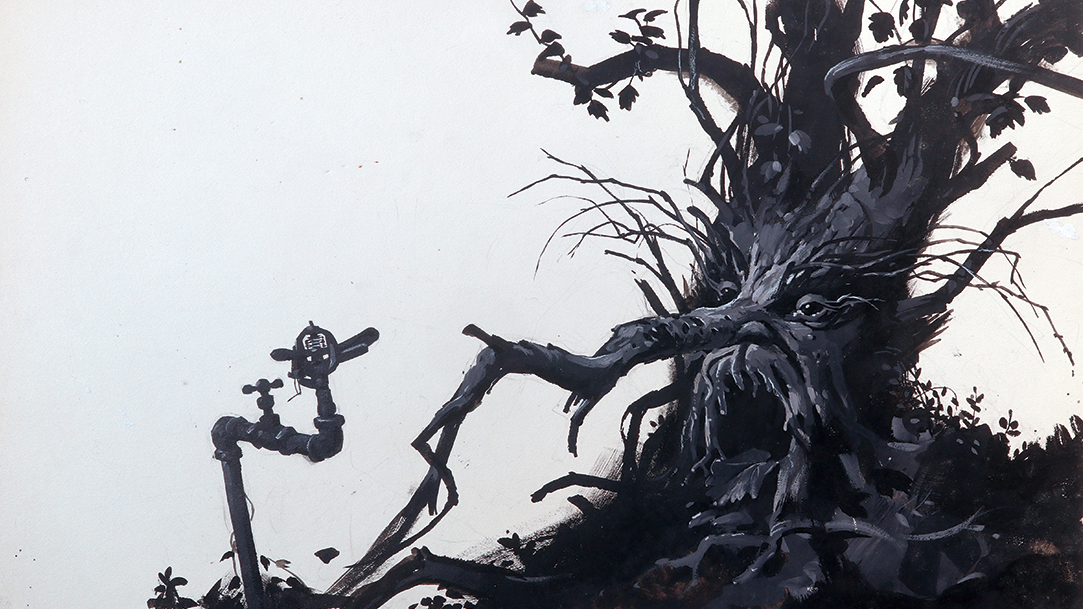
While sketching at the zoo one morning, a small boy asked me for a pencil and a piece of paper. He proceeded to transform the bison near us into an alien monster, complete with attack bees, laser beams, and sound effects.
Comparing his sketch to mine, I realised how I was limiting myself by trying to render the bison literally. Seeing the boy’s creativity made me want to cut loose a little. And I realised that nothing was preventing me from using my imagination when I’m drawing brand new sketches on the spot.
But what kinds of imaginative transformations are possible? Any form can be exaggerated or distorted with the magic wand of your pencil. You can combine or juxtapose any two things, the more dissimilar the better.
To do that, we’ll need to look at the subject with a child’s eyes. In this article, I’ll share some of my favourite tips for adding fanciful or bizarre twists to your location sketches.
The art is all from the newly expanded and remastered edition of The Artist’s Guide to Sketching, originally written and illustrated in 1982 by me and the late Thomas Kinkade. The tips marked JG are by me, and the ones labelled TK were made by Thomas.
[Inspired by James Gurney and Thomas Kinkade? Then grab some of the best artist pencils and a sketchbook, or an iPad for art, and start sketching.]
01. Transforming a tree stump
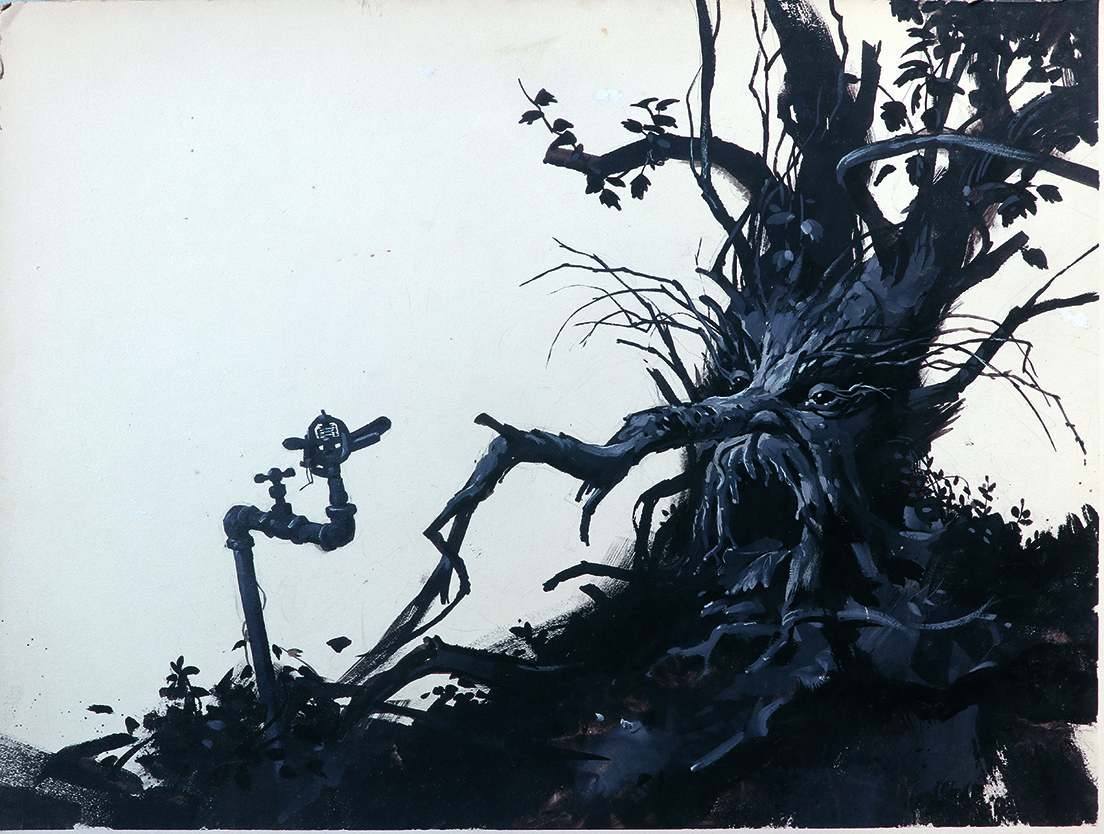
JG: I chose to sketch this in a weed-infested lot, humming with the sound of mosquitoes. A stunted tree caught my eye, its branches suggesting a fanciful face. I coaxed the face out of hiding, emphasising the eyebrow-branches and open mouth, then eliminated background details to play up the silhouette. A sprinkler becomes a contrasting afterthought. Sketching on-site among weeds and mosquitoes stimulated my imagination far more than working in a studio.
02. Collaborate with strangers
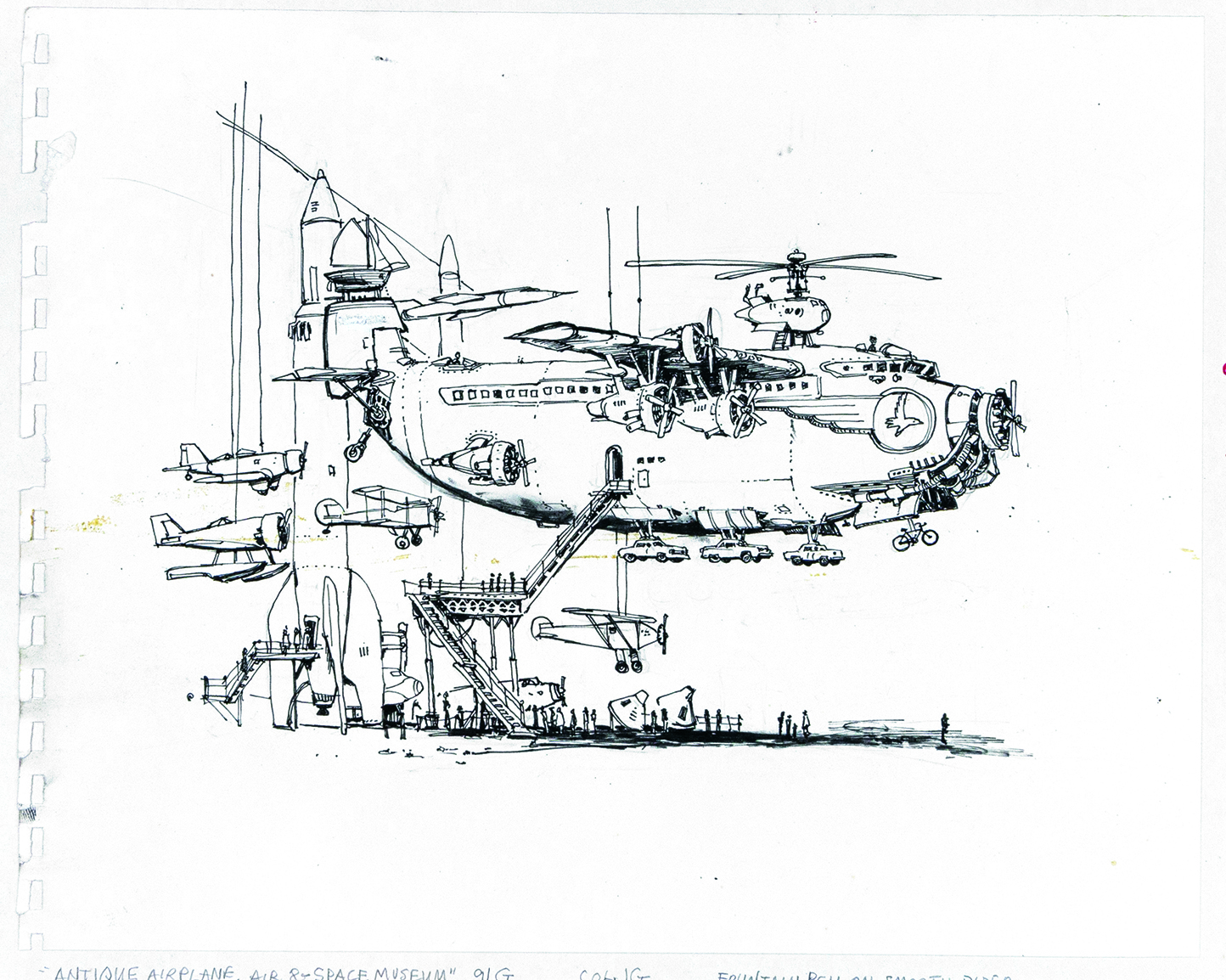
JG: At the National Air and Space Museum, I was sketching an antique aeroplane with a fountain pen when a group of curious kids gathered around to ask what I was going to draw. I said “the ultimate aeroplane.” Together, we brainstormed ideas, combining planes and helicopters. The sketch evolved without a plan, detail upon detail. It reminded me of the way I’d draw as a child – this carefree approach was a refreshing balance to my usual careful and serious drawing style.
03. Make one feature oversized
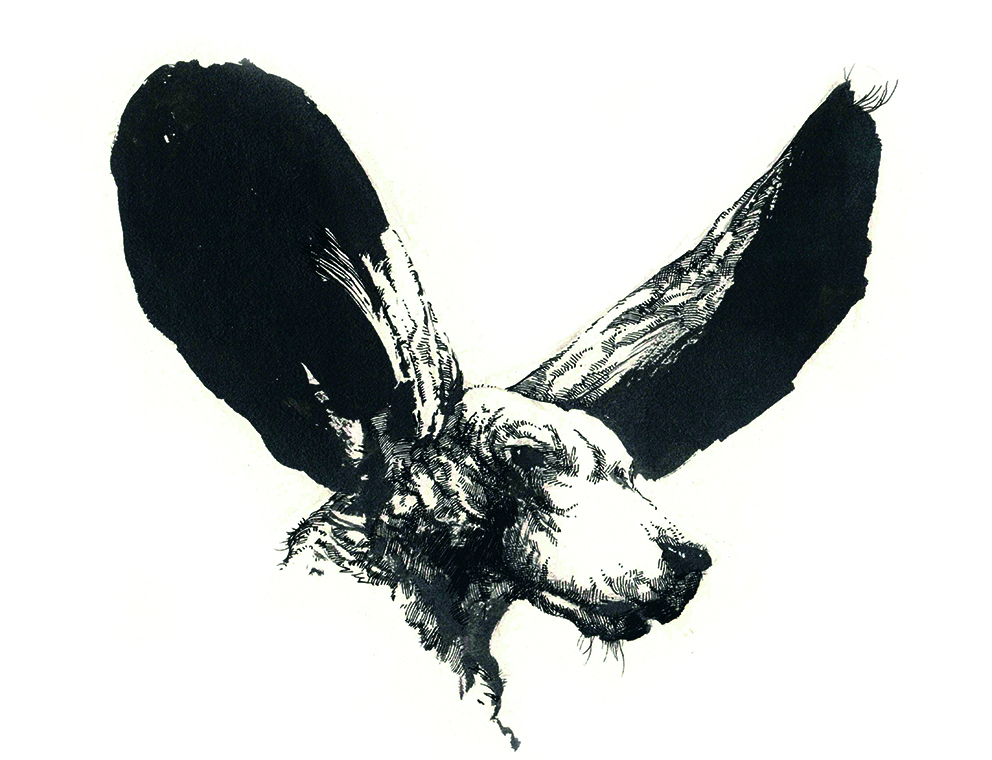
TK: With a breeze, this creature could fly – at least the way I draw him. I exaggerated his moderately large ears far beyond reality to enter the realm of absurdity. I enjoy distorting animal characteristics, but find taxidermy animals are better subjects than live ones. This sketch was drawn at San Francisco’s natural history museum, a welcome diversion from my usual serious studies. Imaginative sketches like this offer a fun break.
04. Exaggerated setting
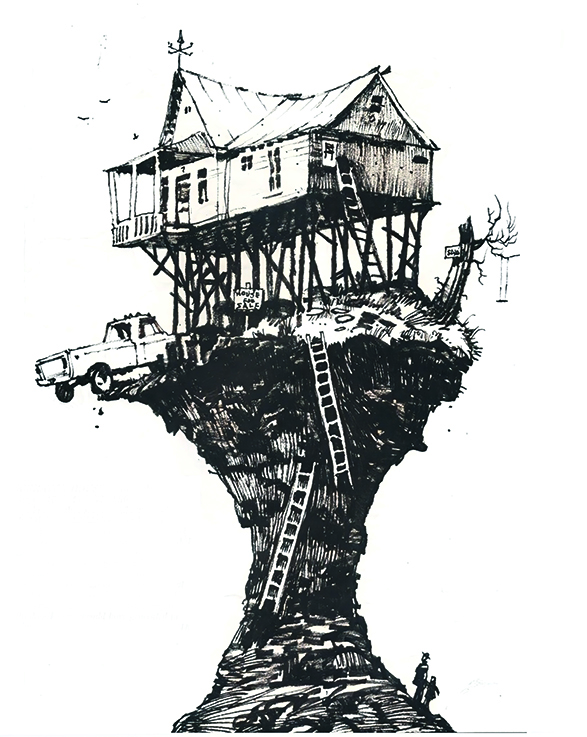
TK: As I sketched out a ramshackle house in West Virginia, an onlooker said, “The hills are steep, but not that steep.” I exaggerated the effect, making the house look precariously perched. I also hollowed out the sides of the hill and added details like a dangling truck and ladders to push the precariousness, inspired by elements in the actual scene. Sketching on location sparks imagination to create unique brand new angles and focal points.
05. Use real-life expressions and gestures to craft a monster
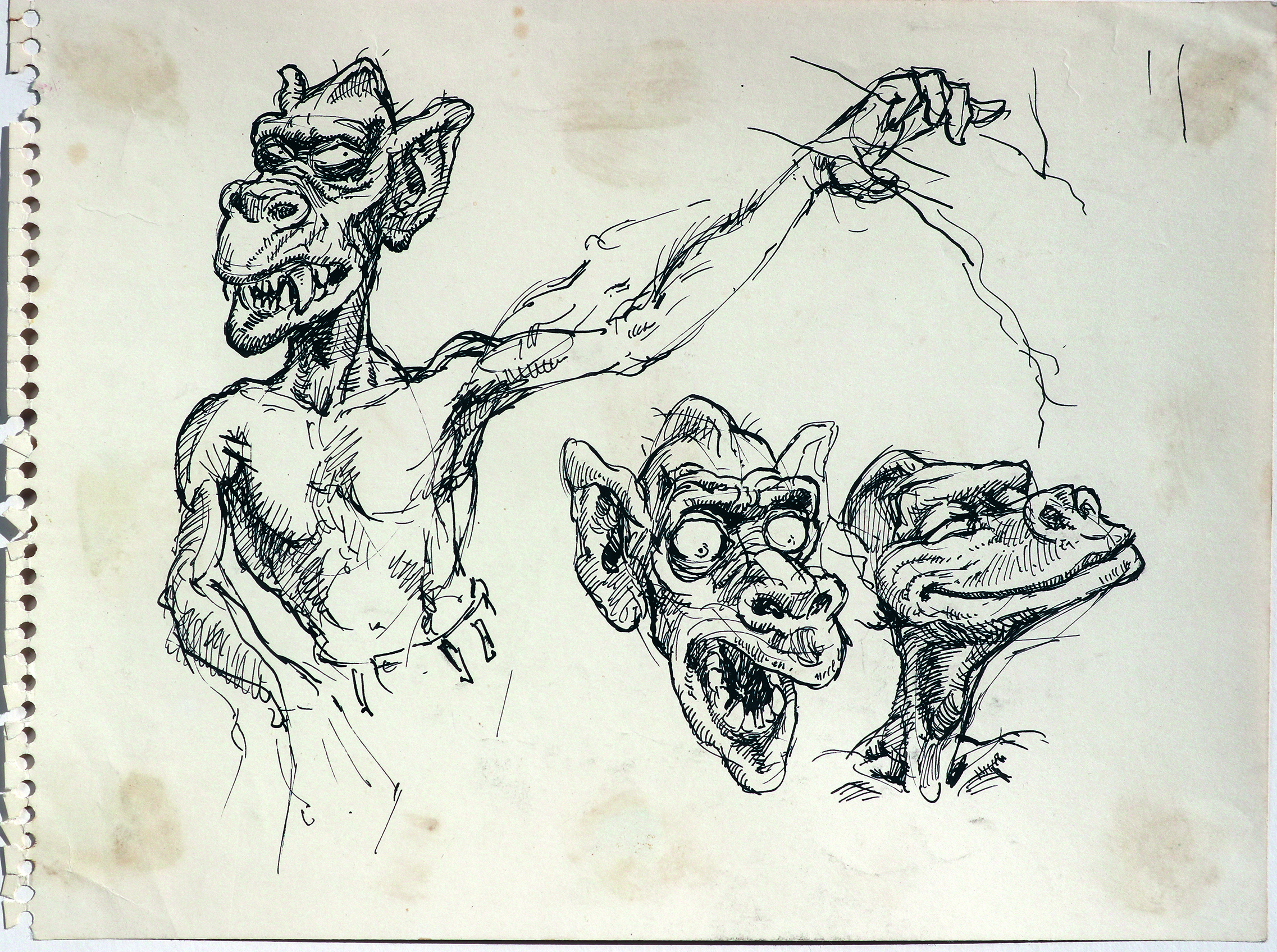
JG: Sketching was my escape when I sat in college lectures. I drew without an underdrawing, exaggerating features. My psychology professor, discussing aggressive behaviour, contorted his face into odd expressions and confrontational poses. In my mind, he transformed into a creature. Inspired by gorilla skull studies, I added details. From the back of the class, I create strange creatures, letting my imagination run wild.
06. Invent a family of creatures
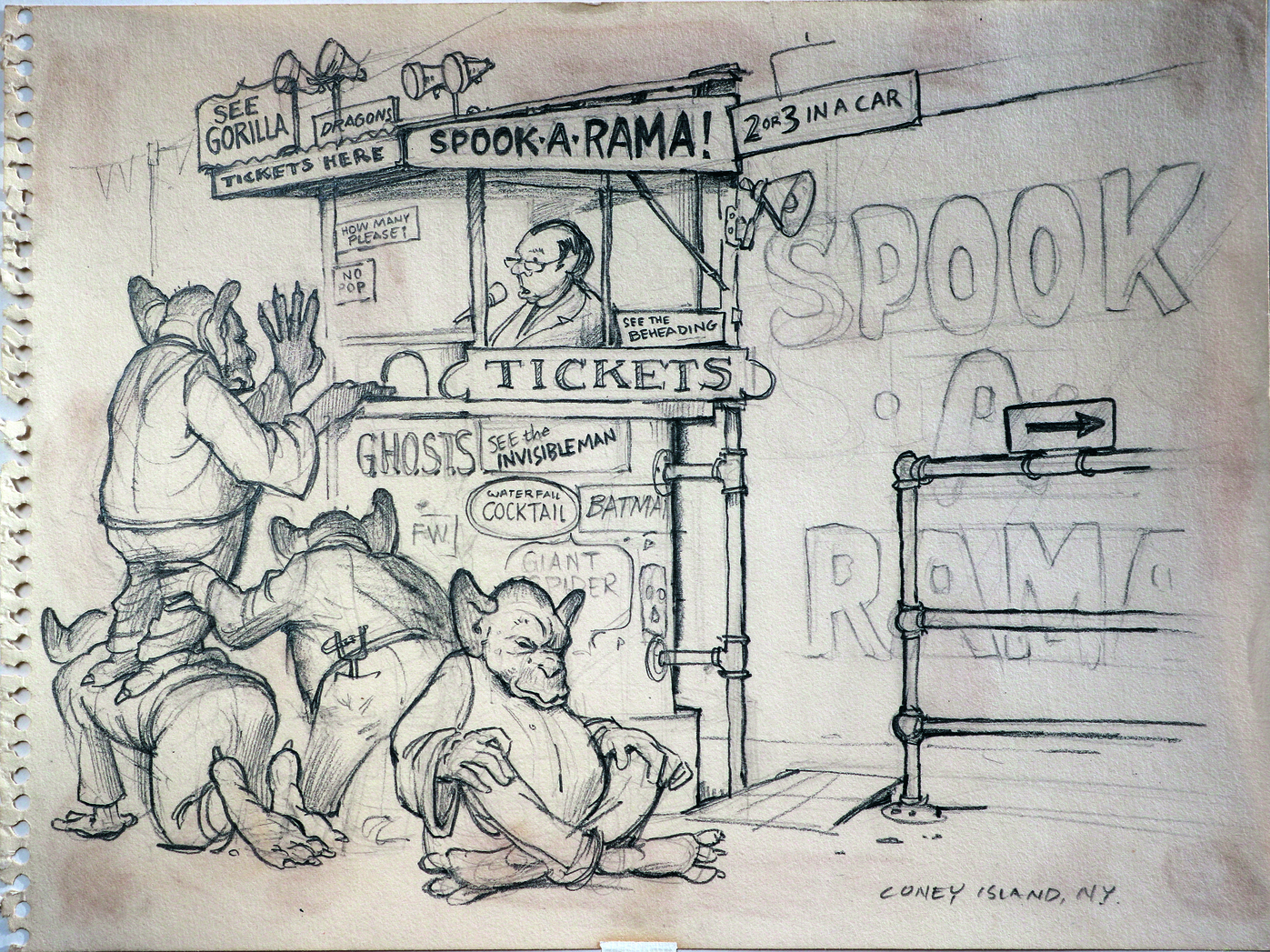
JG: I once set up near the ticket booth for Coney Island’s dilapidated horror show, surrounded by giant green plaster spiders and leering statues. The weird setting inspired me to add my own spooks to the scene. One character led to four, and pretty soon it was a whole group, each doing something different. I lightly sketched them using a No. 2 pencil, then reinforced lines with softer graphite. To avoid any clutter, I lightened the pencil lines around the creatures’ heads and hands.
07. Draw a floating element
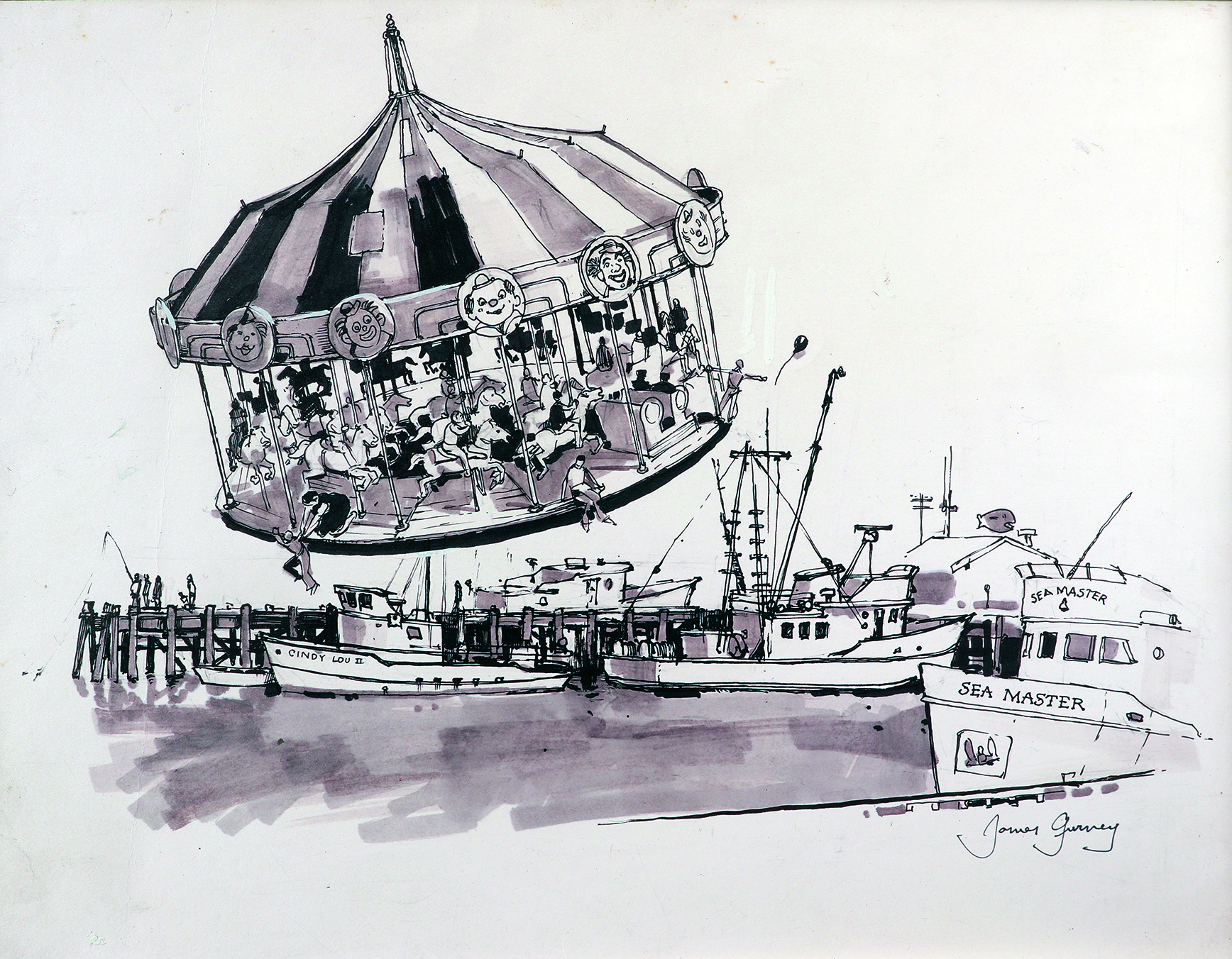
JG: As I leaned against a Coney Island boardwalk rail, I sketched a merry-go-round. I left blank space around it with no idea at the time how I might finish the sketch. Months later, atop fish crates in Morro Bay, California, I stumbled on the sketch while preparing to paint fishing boats. I decided to add that element to the setting in front of me, creating a surreal floating merry-go-round.
08. Mess with the scale
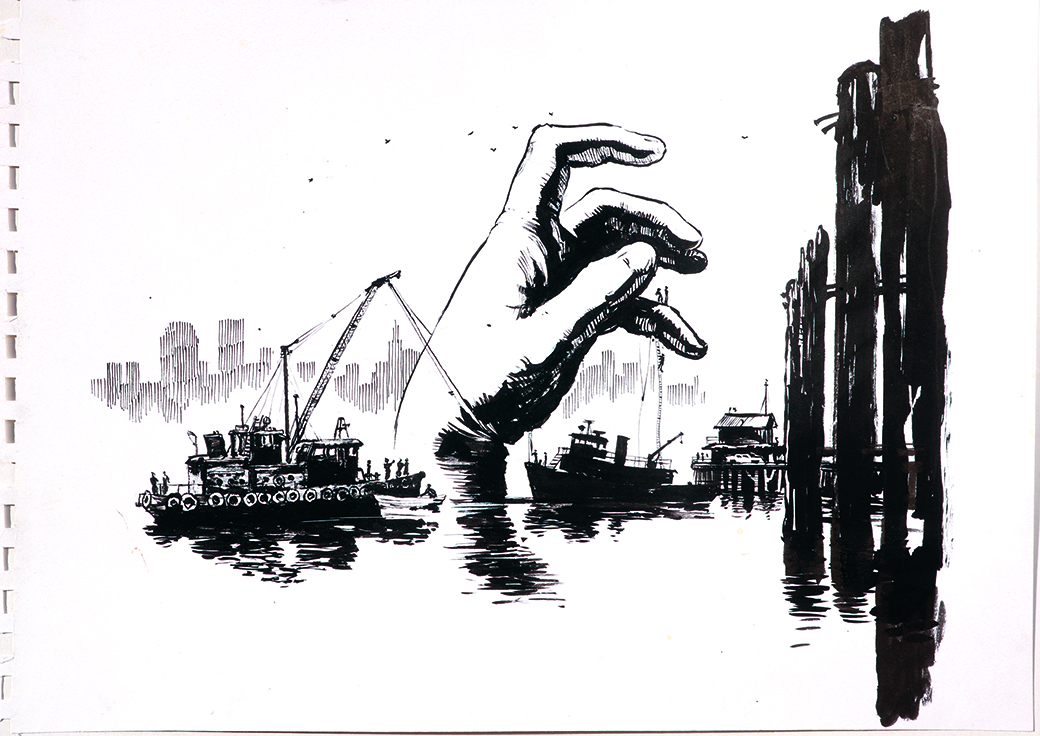
JG: A simple scale distortion can spark a provocative idea. Inspired by the huge scale of the Statue of Liberty that I’d seen earlier, I started thinking of a giant hand looming over the Hudson River’s work boats, and used my own left hand as a model rising out of the murky depths. All the other elements, such as a car, shack, birds, figures, and boats, are in proportion to each other, making the giant hand the absurd element.
09. Think like an animator
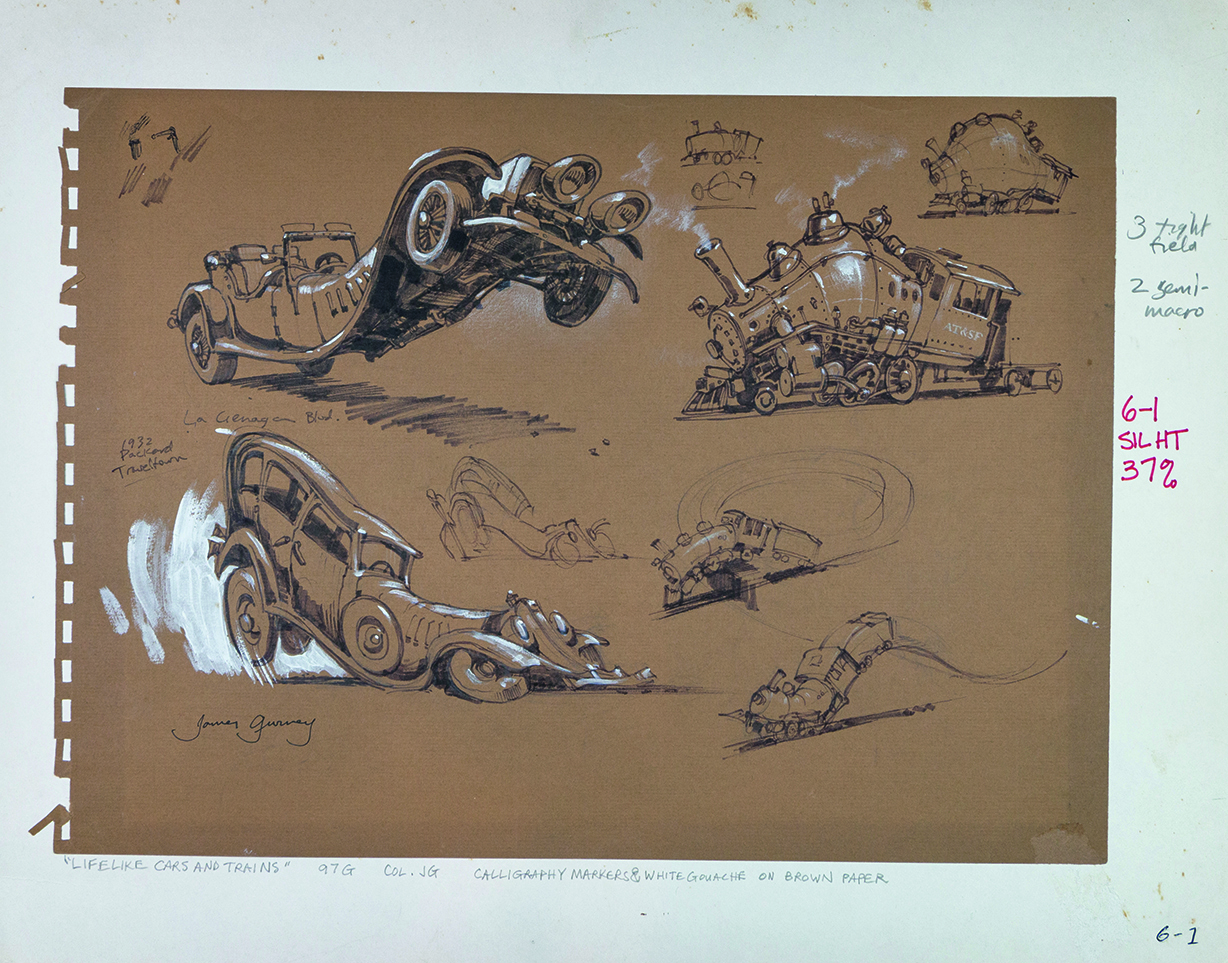
JG: Imaginative sketching lets me defy nature’s laws. Within my sketchbook, steel twists, stretches and inflates; inanimate objects come alive. At a historical museum, I ask “what if?” questions. What if a car rears up or flops down like a dog? What if a locomotive inhales air? These questions help me focus on a single point. Walking around these vehicles in a museum, interacting closely, excites my imagination and makes creative decisions much easier.
10. Deranged detail
Thomas Kinkade builds ridiculous sketches.
Daily design news, reviews, how-tos and more, as picked by the editors.
10A. Create insane elements
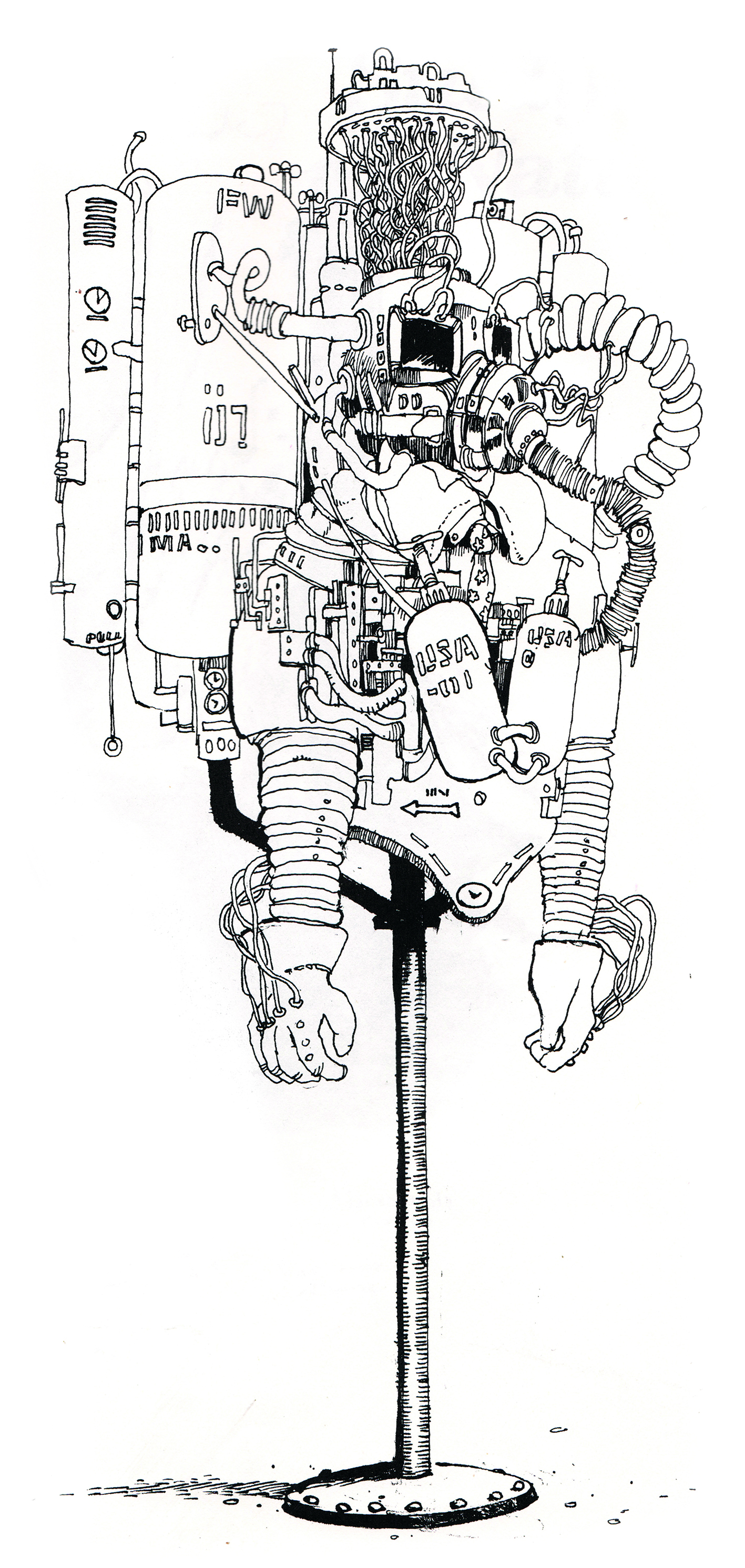
TK: An old-fashioned flight suit at the Smithsonian caught my attention. I then improvised, adding details that the original designers never imagined. I unified the elements by repeating themes, such as spaghetti-like wires above the head and near the hands, and segmented tube forms throughout the sketch.
10B. Keep adding more
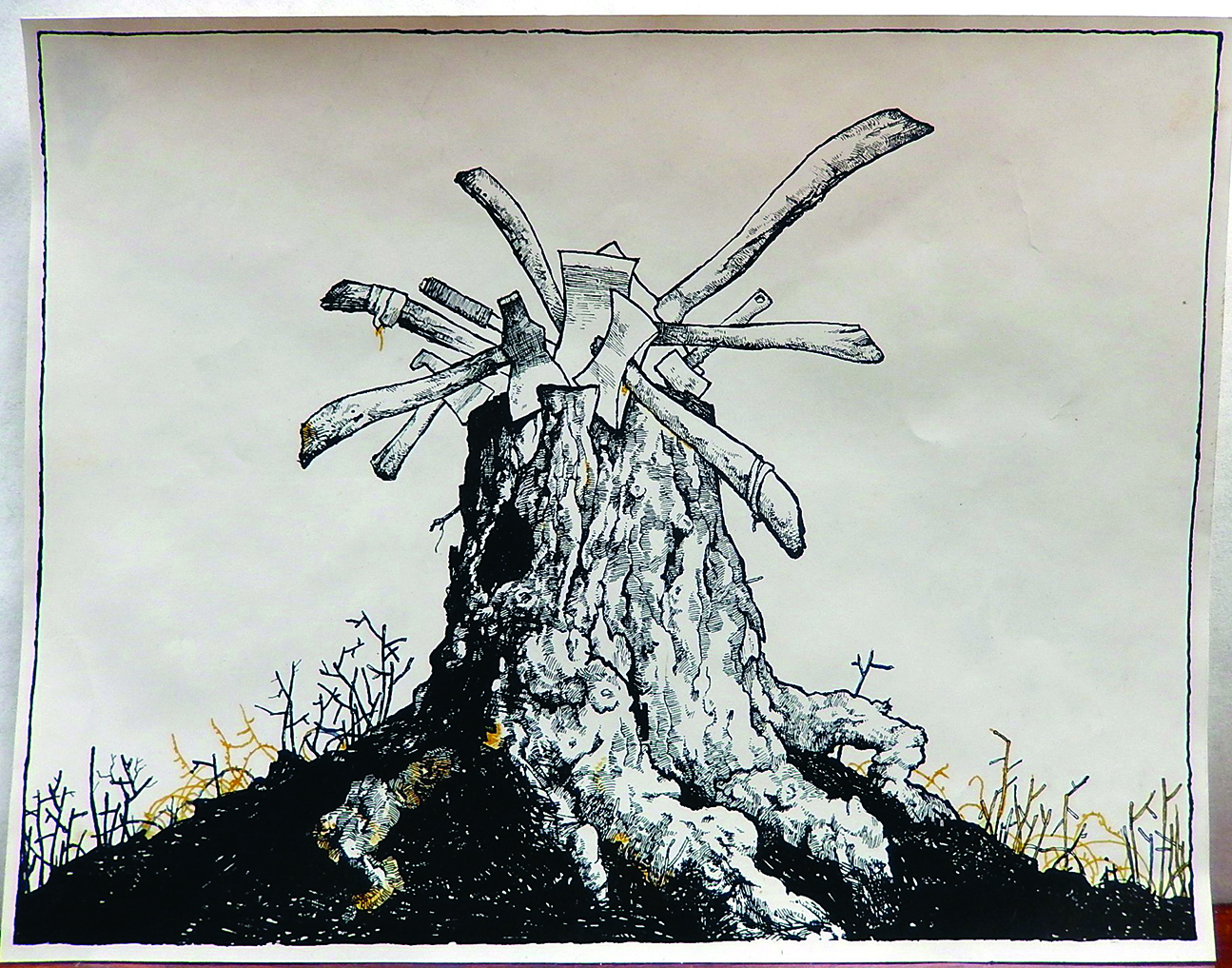
TK: My subject here was a weathered tree, but I turned it into a stump instead. As I textured the bark, I added a woodsman’s axe stuck in the trunk, and that one axe led to another. I then switched to pen and ink to accentuate the various textures.’
10C. Extrapolate real forms
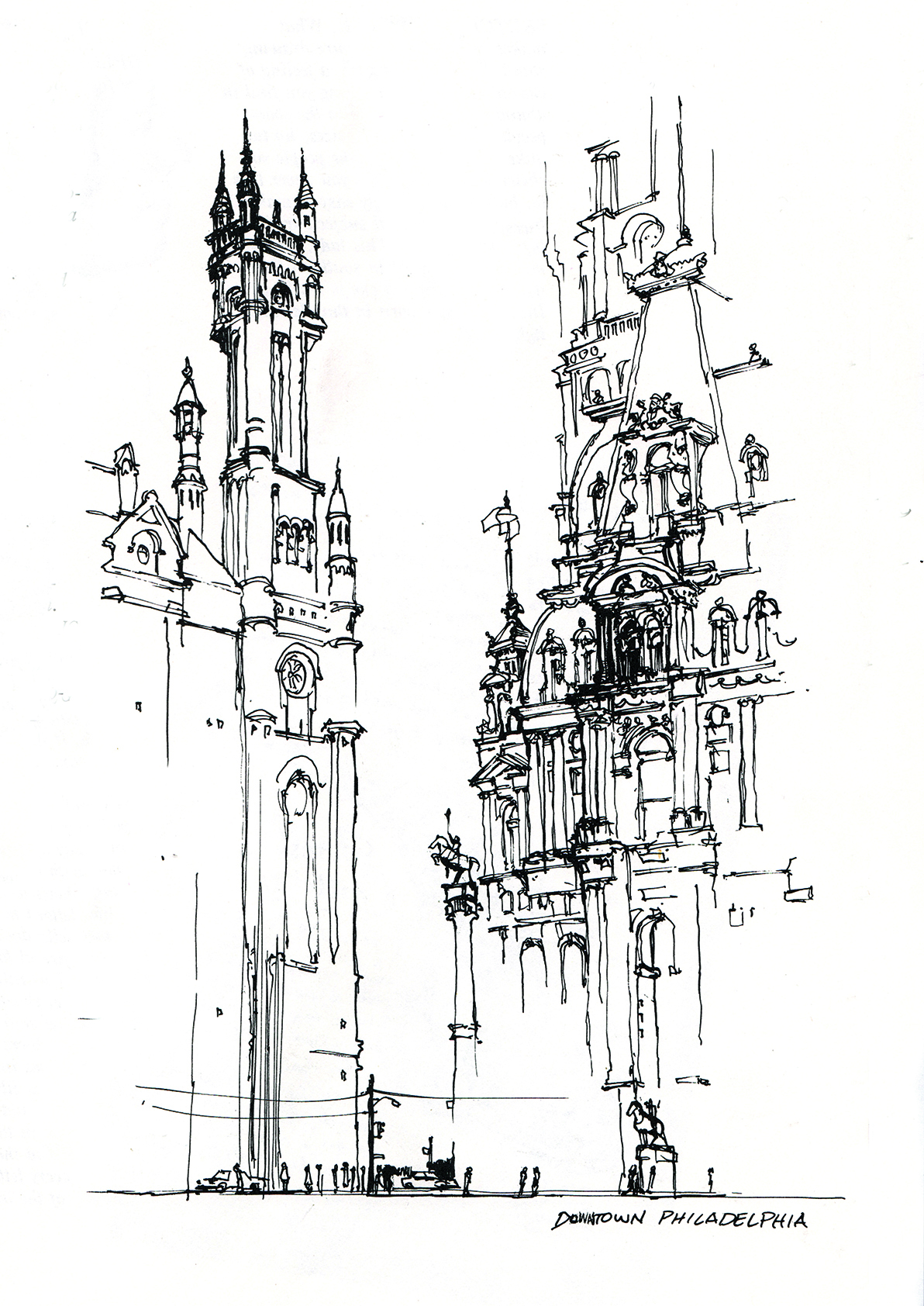
TK: A piece done in pen on smooth paper. The actual building facades in Philadelphia were only half as tall and half as detailed as this exaggerated version. I clustered the detail at the top of the tower to the left and in the centre of the building front and right, letting the detail fall away as it approaches street level.
10D. Go for the limit
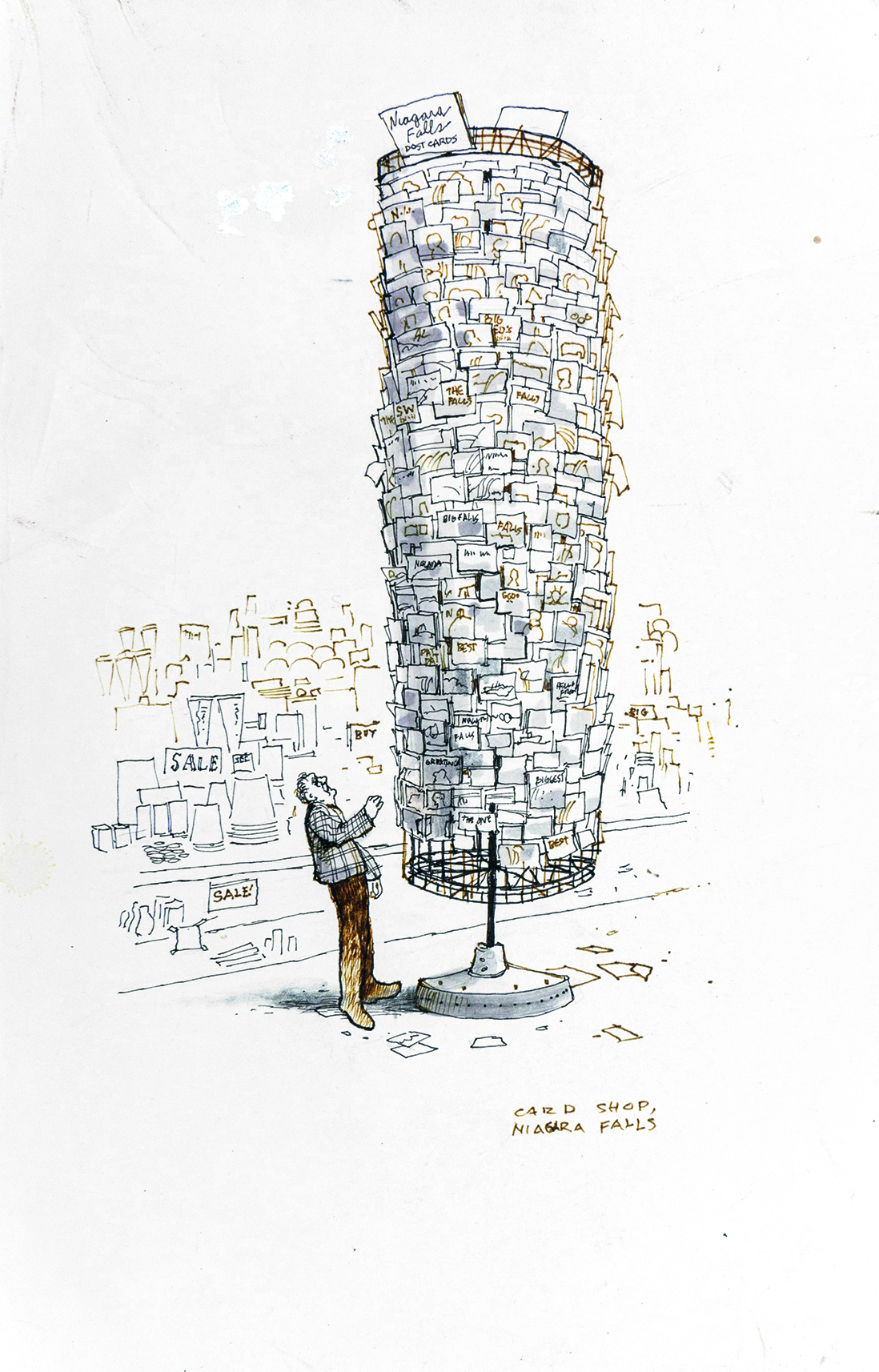
TK: How tall can you make this card spinner rack before it becomes ridiculous? And how many cards before it becomes absurd? Whatever that amount, add 20 per cent more!
11. Combine two worlds
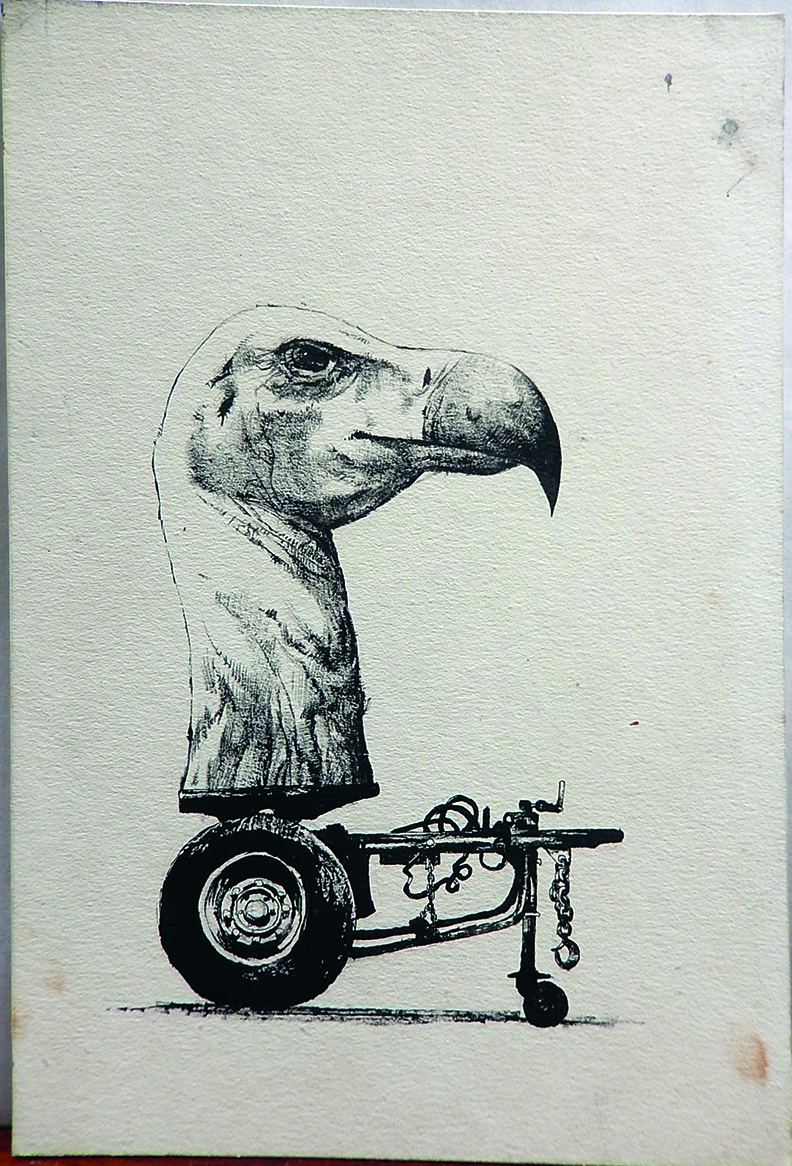
TK: When I decided to sketch a trailer and hitch, I had no idea it might transport a giant vulture head. But that’s what happens when we let the imagination take over. Initially, the trailer sketch seemed boring, so I tucked it away. Later, at a natural history museum, I stumbled upon the sketch and saw a stuffed vulture. Its worn texture contrasted perfectly with the trailer’s crisp forms and I couldn’t resist combining them.
12. Develop contrasting characters
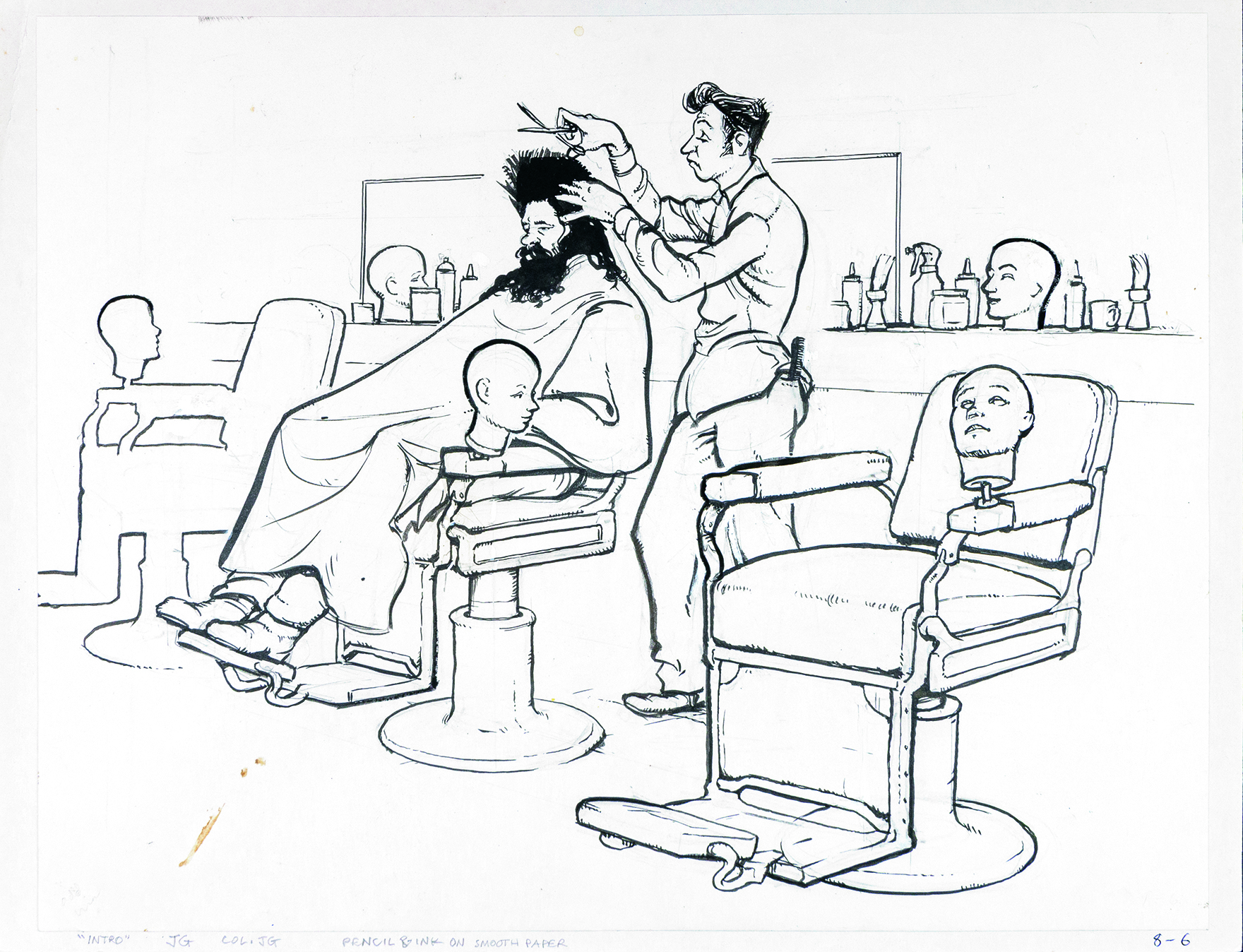
JG: Any character you draw will become more interesting if you juxtapose them with another character of an opposing dominant trait. A weakling looks weaker beside a ruffian. A rich man makes a beggar seem poorer. In this case, I was sitting in a barbershop making the customer look tough and hairy, while the barber looked scrawny and carefully coiffed. Spotting the black in the hair drives interest.
13. Give it a face
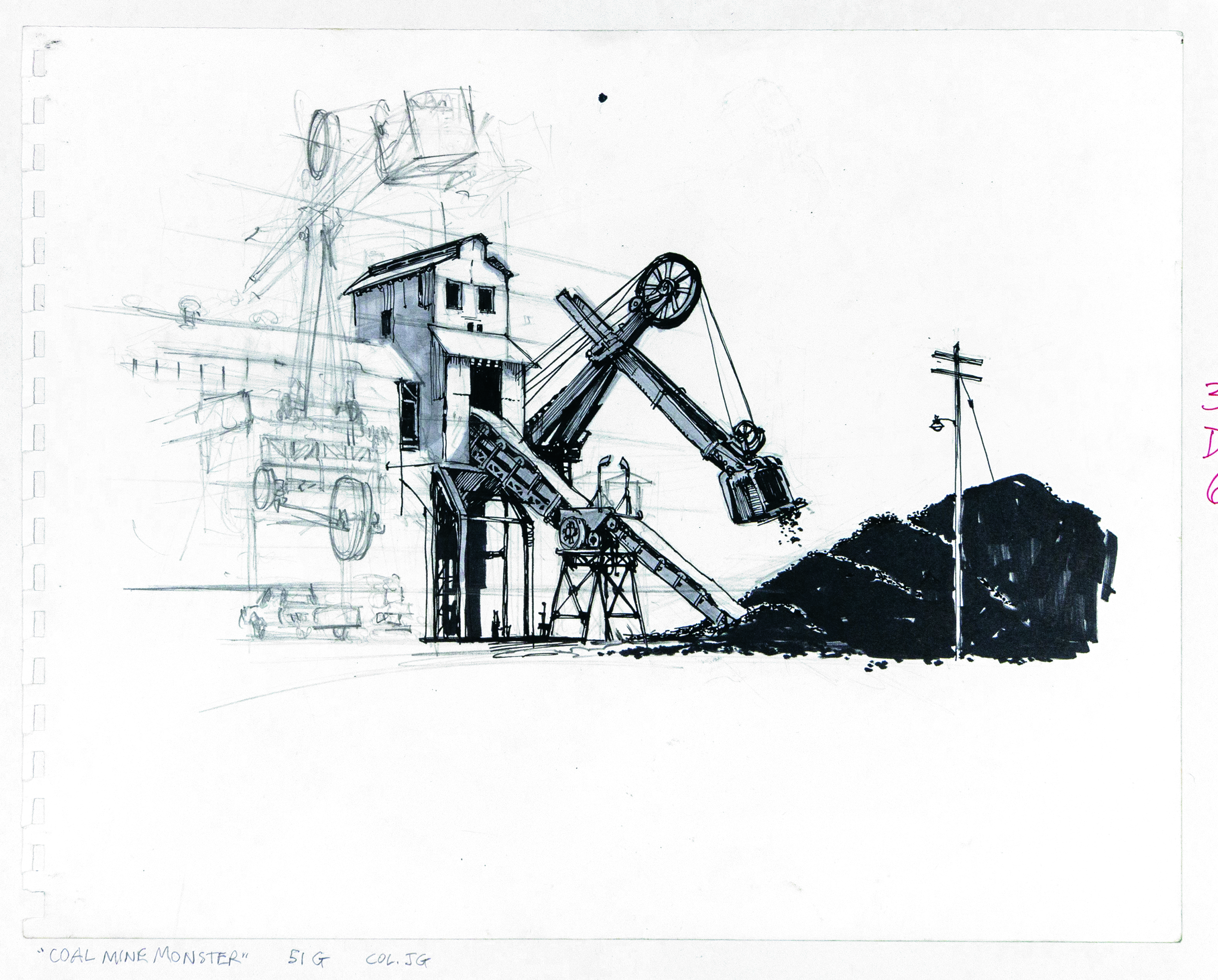
JG: To draw this imaginary creature inspired by a coal mining machine, I started with a hazy underdrawing to explore shapes and forms. A perspective grid relates elements to each other, before I constructed shapes from basic geometric forms like the open-mouthed shed. Ensure the eye level is consistent, such as aligning with a nearby object. The sketch was refined in pen and marker, with pencil lines erased for a polished finish.
This content originally appeared in ImagineFX magazine, the world's leading digital art and fantasy art magazine. ImagineFX is on sale in the UK, Europe, United States, Canada, Australia and more. Limited numbers of ImagineFX print editions are available for delivery from our online store (the shipping costs are included in all prices).
At age 22, James Gurney (pictured) and Thomas Kinkade dropped out of art school and hopped the freight trains. Those adventures led to their later creative careers. James created Dinotopia, while Thomas became the Painter of Light.
You must confirm your public display name before commenting
Please logout and then login again, you will then be prompted to enter your display name.
